This data, from 2016, was analyzed to determine what are the most commonly released toxins, in which states and cities are the most chemicals emitted, and which industries contribute the most to this pollution. Summary of findings:
This includes data reported from more than 18,000 facilities across the U.S., spanning major industries like manufacturing, mining, chemicals, and utilities. It includes total releases (in pounds) of roughly 650 different toxins which are determined to have a significant adverse effect of humans and/or the environment. In this report, “release” means that a chemical was “emitted to the air or water, or placed in some type of land disposal.” After tallying the total toxin release by state, which includes all toxins across all industries, a map could then be generated. In the map below, darker colors indicate a higher total volume of toxins (in pounds). On the mainland, we can see that Nevada and Utah facilities are especially detrimental to the environment -- but a strip of states in the Rust Belt (Illinois, Indiana, and Ohio), along with Texas and Louisiana, are also major players. Alaska, though, handily outranks every other state by nearly 3x. A closer look, at a county level, reveals that 91% of Alaska’s toxin releases come from one county: Northwest Arctic, AK: In fact, taking this one step further, we see that nearly all of these toxins originate from one city: Kotzebue, AK -- a tiny town that is home to 7,500 people. Why? Just 90 miles from Kotzebue is Red Dog Mine, the largest source of zinc in the world, and a significant source of America’s lead. In operation since 1987, the mine is estimated to contain 77.5 million tons of zinc, lead, and silver - and each year, its activities release 756 million pounds of toxins into the environment. Three of the top 5 cities -- Humboldt, Lander, and Eureka -- are in Nevada. All are known to contain multiple, active gold mines that collectively release hundreds of millions of pounds of toxins. It’s likely you haven’t heard of a lot of the cities on these lists -- and that’s because most of the major industrial facilities in the U.S. are set up outside the limits of most major cities, far from large populations. So, let’s take a look just at the 100 most populous cities in the U.S. (according the Census data). The list below is sorted by population size. Interestingly, you’ll see that two of the largest cities in the U.S. -- New York and San Francisco - have no data listed. Only certain “qualifying” facilities are required to submit data (those that release over a certain threshold of particular toxins), so it is hypothesized that this is either because:
In any case, of the 50 most populous cities, Indianapolis, IN leads the pack with 10.9 million pounds. The city has long been cited for its poor air quality, a result of steel mills, auto plants, and numerous coal-powered power plants that spew out arsenic, lead and mercury at alarming rates. ReferencesForbes.com. (2018). The Most (And Least) Toxic Places In America. [online] Available at: https://www.forbes.com/sites/priceonomics/2017/11/07/the-most-and-least-toxic-places-in-america/#532237f14ac1 [Accessed 9 Feb. 2018].
Ode to Clean. (2018). The United States of Toxins. [online] Available at: https://blog.odetoclean.com/the-united-states-of-toxins-1e219e5a701f [Accessed 9 Feb. 2018].
0 Comments
Leave a Reply. |
This feed contains research, news, information, observations, and ideas at the level of the world.
Archives
May 2024
Categories
All
|

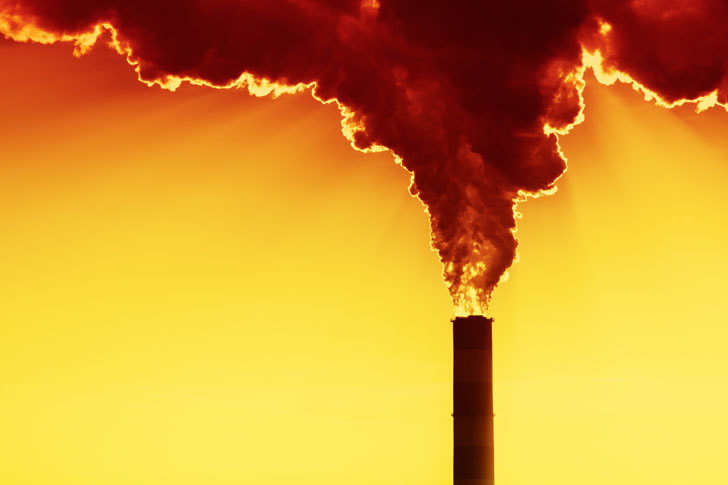
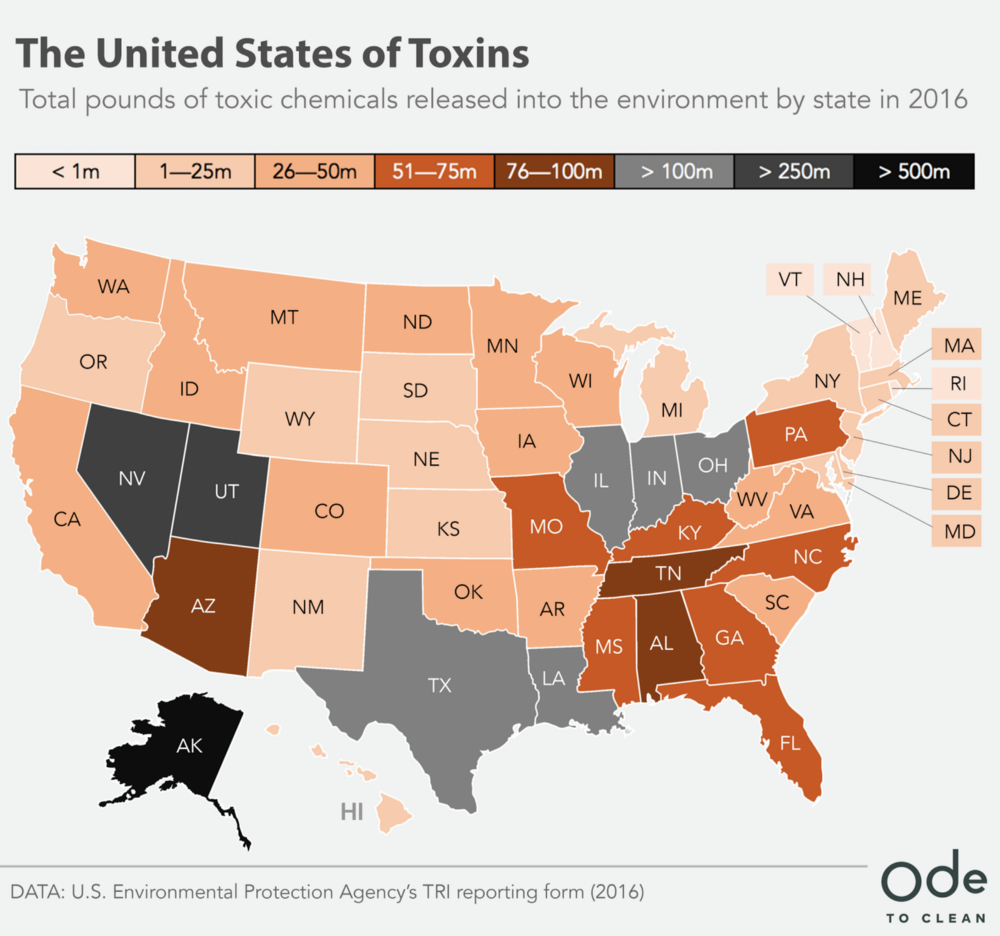
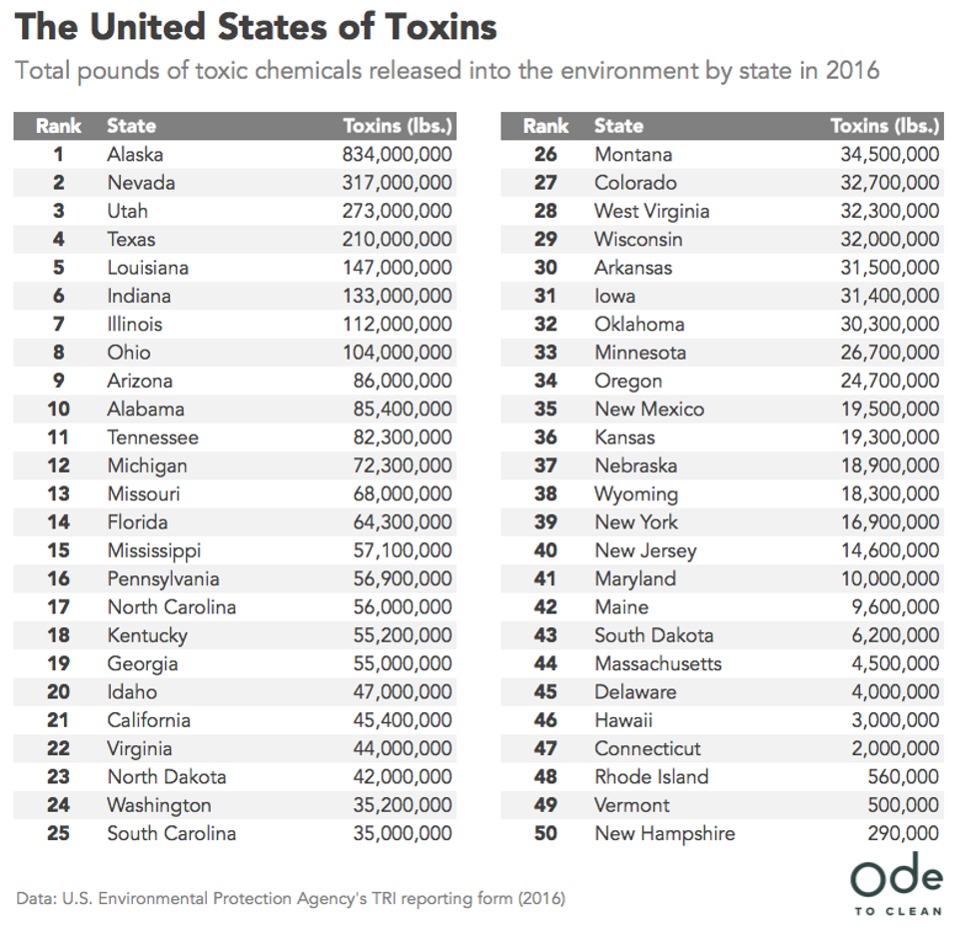
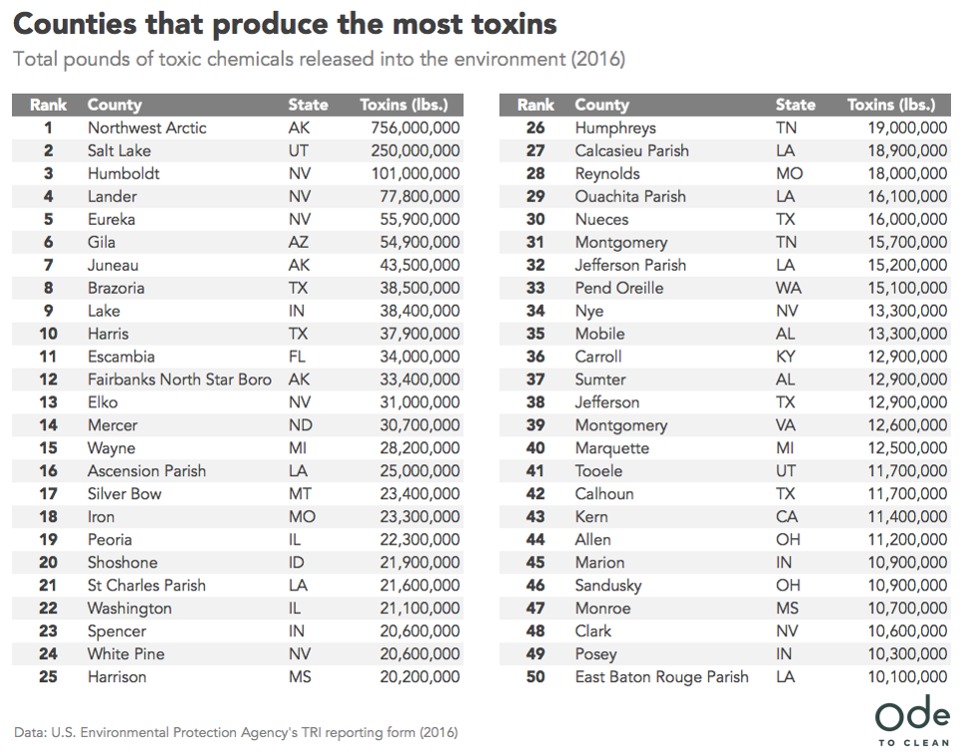
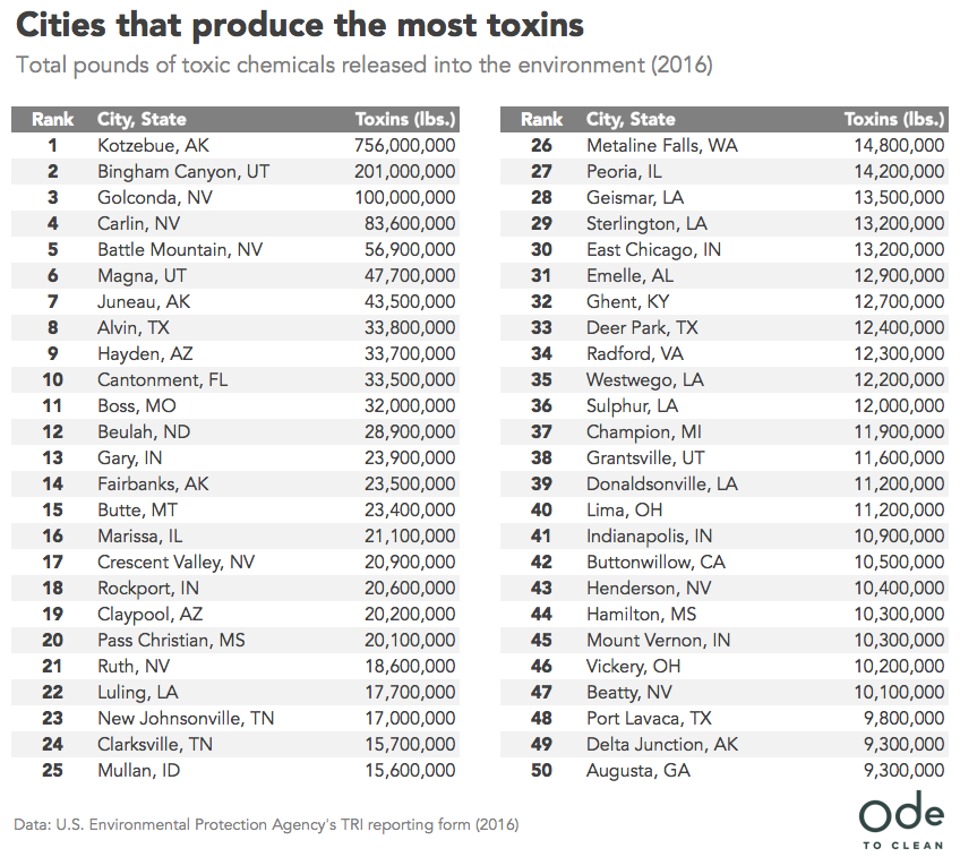
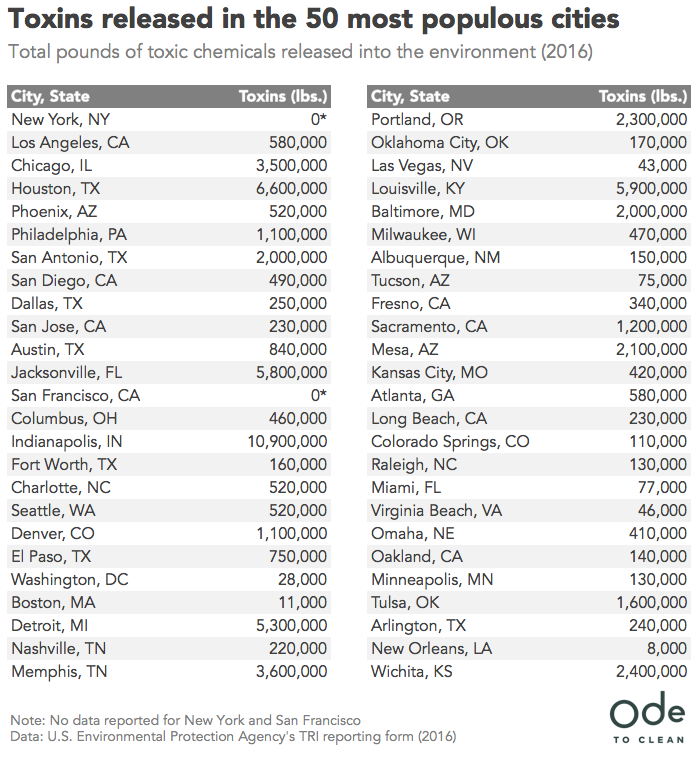
 RSS Feed
RSS Feed

